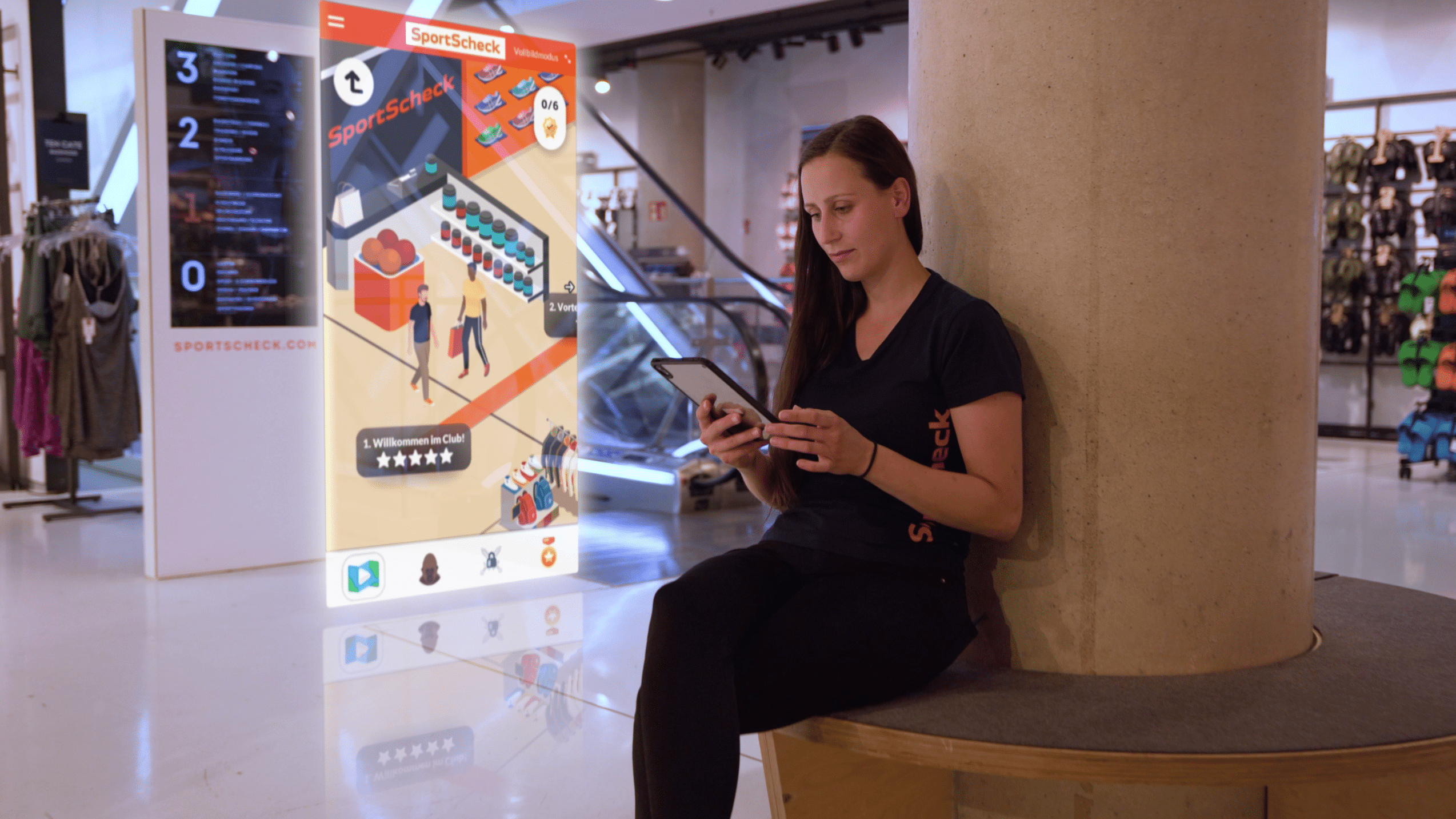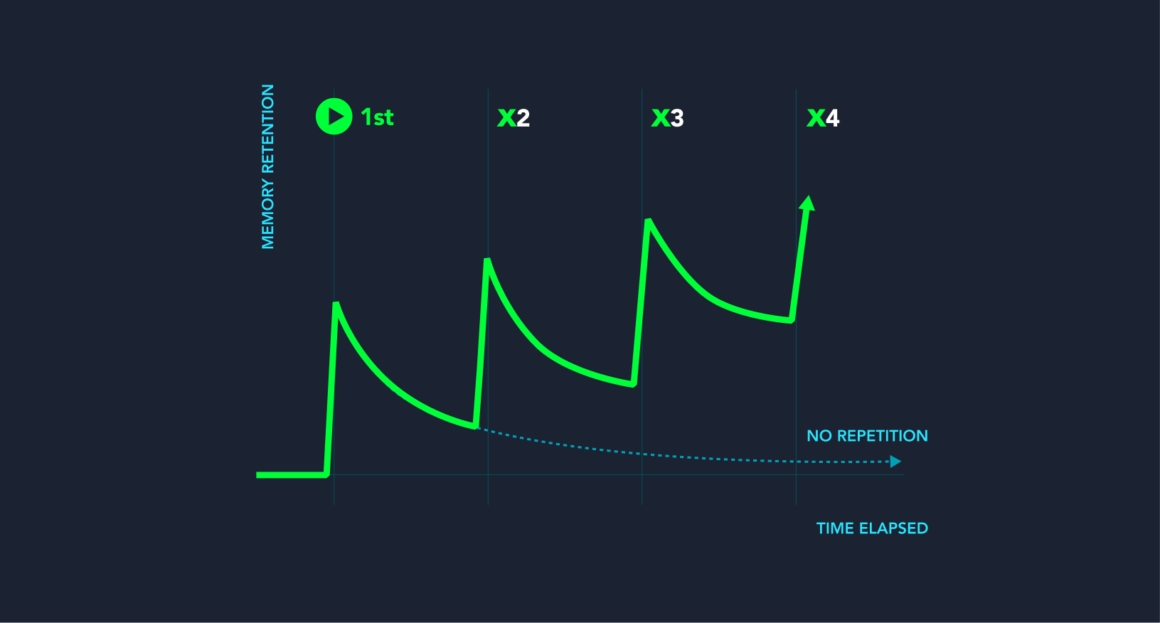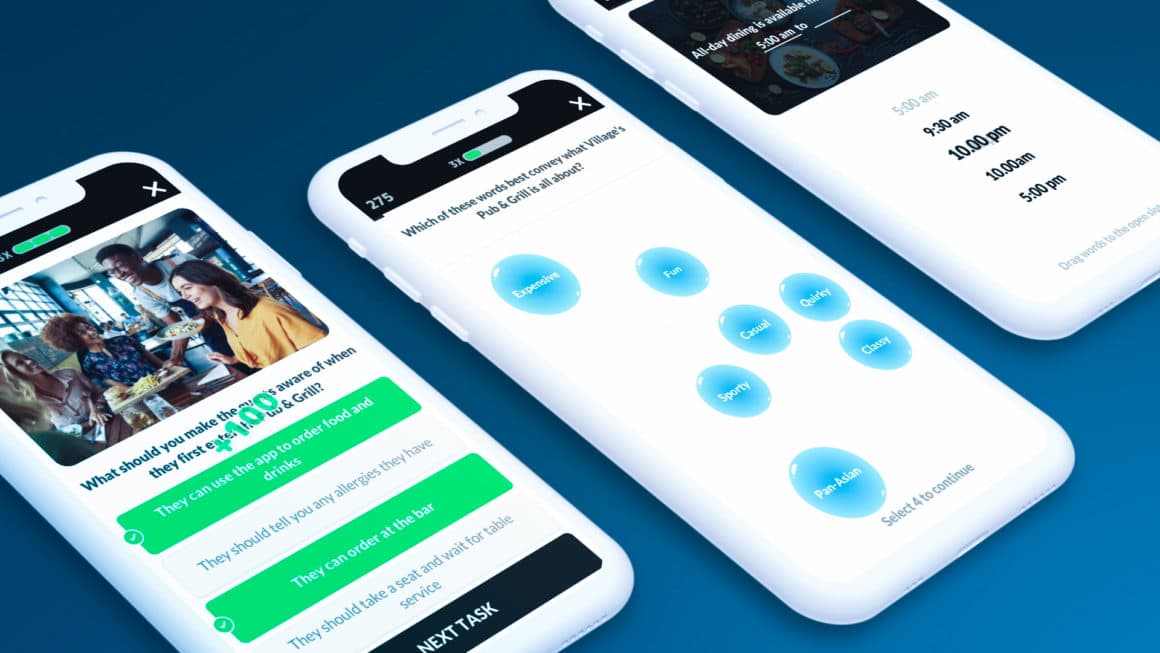2. Why should you care about microlearning as an employer?
Shorter, accessible content may be the key to getting your employees on board with your learning and development. According to Software Advice, more than half of employees say they’d be more likely to use the learning and development tools given if it was broken into microlearning1.
Bite-sized learning gives employees the chance to gain knowledge and learn new processes and skills at their own pace. When learning and development is accessible and engaging, employees are more likely to be motivated to complete the training.
3. Get started with microlearning
Make use of ‘spaced repetition’
Spaced repetition takes advantage of a memory phenomenon known as the spacing effect. Our brains better retain information when we space out our learning over a period of time.
Here’s how you can start making the most of a spaced repetition approach:
Little and often: If you need to run physical training, consider spreading it over a couple of days. Yes, it may take a little longer, but the chances of important information being retained are a lot higher.
Think ahead: When planning your training, schedule in refresher sessions at a later date. This is especially useful if you can’t break your training up into several days.
‘Nudges’: After a big learning day, a lot of people need time to go away and process the information. Think about setting up automated ‘nudges’ with key information or activities for your team to think about or complete to support the training they’ve done.
Encourage, and enable, ‘binge-learning’
A bit of friendly competition never hurt anyone. By setting up leaderboards and fostering a competitive approach to learning, you may be surprised at how involved your teams become.
How often have you played an arcade game ‘one more time’ to try to beat your previous score. When learning is fun, accessible and easy to digest, it motivates employees to repeat important training.
4. Microlearning in action
Microlearning comes in many different forms.
- Images, including photos and visual learning tools
- Text to display messages or clues
- Short educational videos
- Snippets of audio
- Quizzes
- Gamification
Mobile is your friend
People are already used to using their phones to do all sorts of things, from shopping to browsing social media. Why should learning be any different? You have the technology (literally) at your fingertips.
Ensuring your learning is available on mobile devices allows your teams to train at a time and place that’s most convenient for them. If they’re checking their phones during their bus ride home, they may have 5-10 minutes to complete a module.
Studies suggest that mobile learners are nearly 50% more likely to complete training than their desktop counterparts!2
Accessibility
People are more likely to get involved with learning when it’s easy to access. Make sure your training program is seamless and easy to use.
You can even integrate your microlearning courses with existing Learning Management System (LMS) which your people will already be familiar with.
Keep it concise, keep it relevant
People are busy. Use your microlearning as a concise and relevant way to help your teams grow and develop.
Remember, you only have a very limited time to get your messages across. While microlearning can be considered anything 10 minutes or under, you’ll realistically get a 3-5 minute window, so you need to make it count.
Use videos, VR or AR
Give your team a slice of the future. VR and AR technology has come along a way in the last few years, allowing you to convey key information in a totally virtual way. Immersive learning is a great way to speak to not only to your kinesthetic learners who like to jump into physical learning, but also your audio and visual learners too.
It’s clear that demand for this style of training is becoming more popular. Nearly 70% of the global workforce would be willing to give VR and AR training a go3.
Encourage daily habits
Improving and increasing knowledge retention is all about making learning a habit.
According to psychologists, it can take up to two months (or 66 days) to form a habit4. If your teams have the time, space and accessibility to do 10 minutes of training every single day, the chances of important information being retained are going to significantly improve.
You’ll soon curate a positive learning culture where people repeat training on a regular basis.
Are you ready to make microlearning part of your learning and development program? Speak with one of our experts today:





